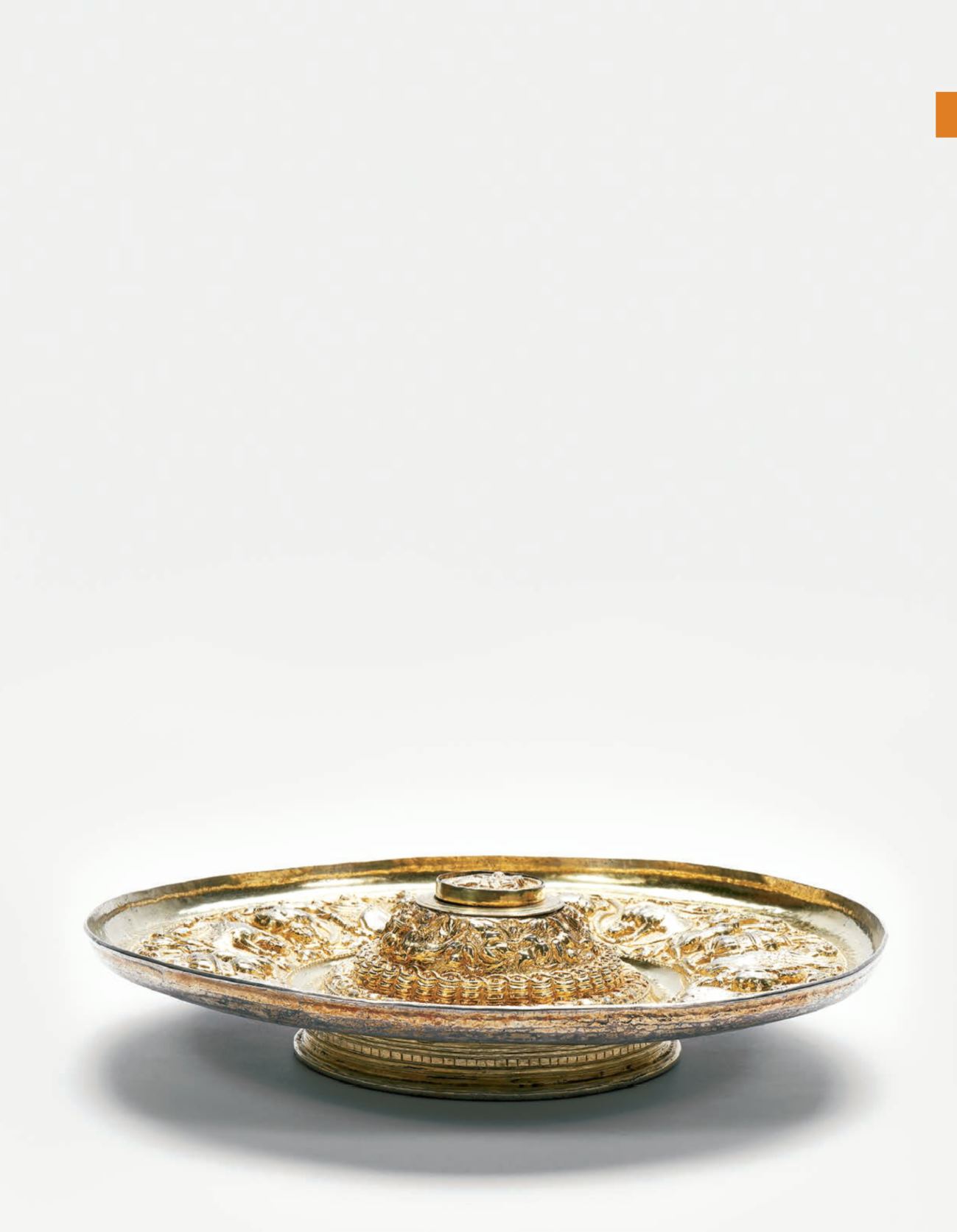
cabral moncada leilões 189 | 26 de Setembro de 2017
369
A
low stemmed
s
Alver with elevAted centre
900/1000 gilt silver, chiselled decoration with central
medallion “St. George on horseback slaying the Dragon”
surrounded by a frieze of “Classical Amphorae flanked by
fantastic beasts and foliage” encircled by a “Fence of ropes
rolled around stakes” and “Overlapping bay leaves”; chiselled
rim “Classical amphorae flanked by dragons and other
fantastic beasts among vegetal motifs”, Portuguese, 16th C.
(early), regilded, central medallion of the same period,
adapted, probably German, twice marked “IF” probably a Juiz
de Ofício (goldsmith authority) of the city of Oporto,
two visible assay marks, remarked with Austrian
import mark from Vienna (1872-1901)
References: vd. ALMEIDA, Fernando Moitinho de - "Marcas de
Pratas Portuguesas e Brasileiras (Século XV a 1887)". Lisboa:
IN-CM, 1995, P313B; e SILVA, Nuno Vassalo e - "Ourivesaria
Portuguesa de Aparato. Séculos XV e XVI".
Lisboa: SCRIBE, 2012.
This elegant salver, with its original low stem, is a fine
example of the introduction of Renaissance language in
Portuguese civil silver at the beginning of the 16th century,
described in the documentation as "the Roman manner".
It follows the scheme of Gothic salvers with the ornaments
distributed uninterruptedly on the rim and around the
elevated central medallion, the last one representing St.
George and the Dragon. According to Expert Henrique Correia
Braga, though later adapted to the salver, the central
medallion is from the same time of the salver, or even earlier,
possibly German. All the embellishments are inspired in the
"grotesque", in this case with fantastic beasts flanking
symmetrical classical amphorae which develop by windings,
ending in fantastic beasts facing each other. "Grotesque" motifs
are diffused with full expression in the Portuguese art of the
time, of which the embellishment of the cloister of the
Jerónimos Monastery is a true catalogue. The taste for detail,
still of Gothic tradition, can be seen in the complex work of
reproduction of a fence of coiled rope which encloses the
centre of the salver. This is embellished with fantastic creatures
who apparently cannot transpose it. Although following
classical motifs, it denounces the fact that the workshop where
it was executed was not interely familiar with the precision of
the design of the new Renaissance motifs used, in a demand to
satisfy the desire for novelty of the clientelles, given the fact
they almost get confused with medieval bestiary. Cabral
Moncada Auctioneers wishes to express his recognition and
thanks Doutor Nuno Vassallo e Silva and Expert Henrique
Correia Braga for their contribution to the description and
historical-artistic framework of this salver.
Information: to all due effects, we inform that the
Direcção-Geral do Património Cultural / Ministério da Cultura
de Portugal (Cultural Heritage Office/ Ministery of Culture
of Portugal), to whom we have previously communicated the
auctioning of this salver, formally notified Cabral Moncada
Leilões, in 9.3.2017, that it does not intended to open a legal
administrative procedure in order to classify this salver.


